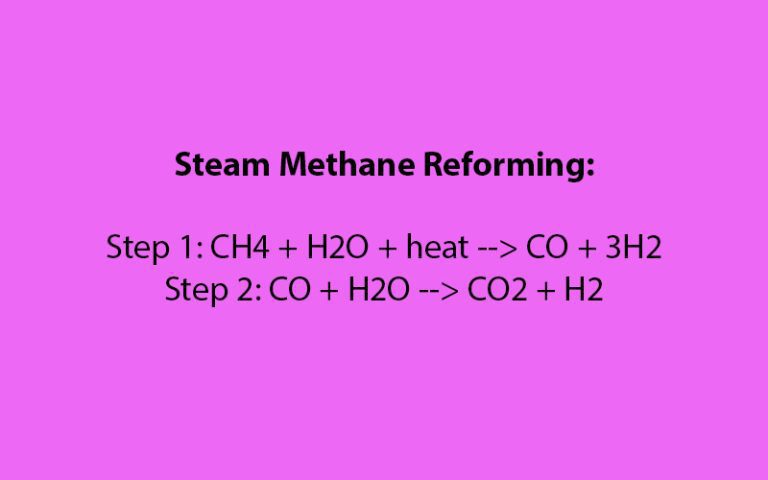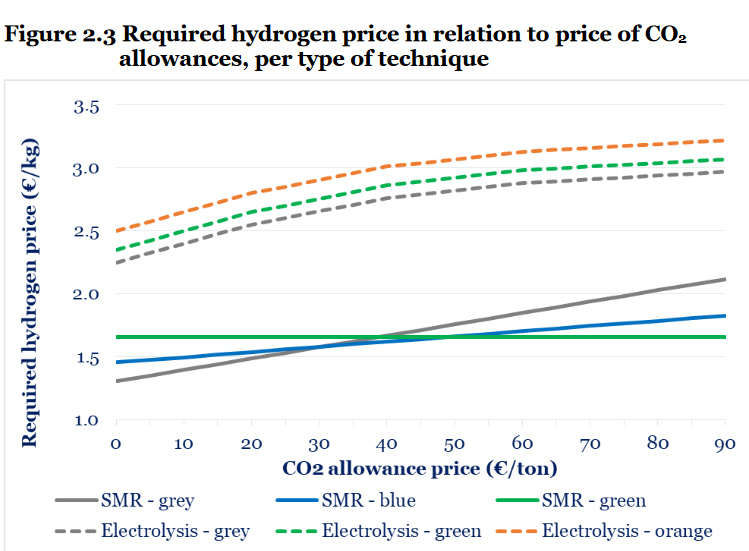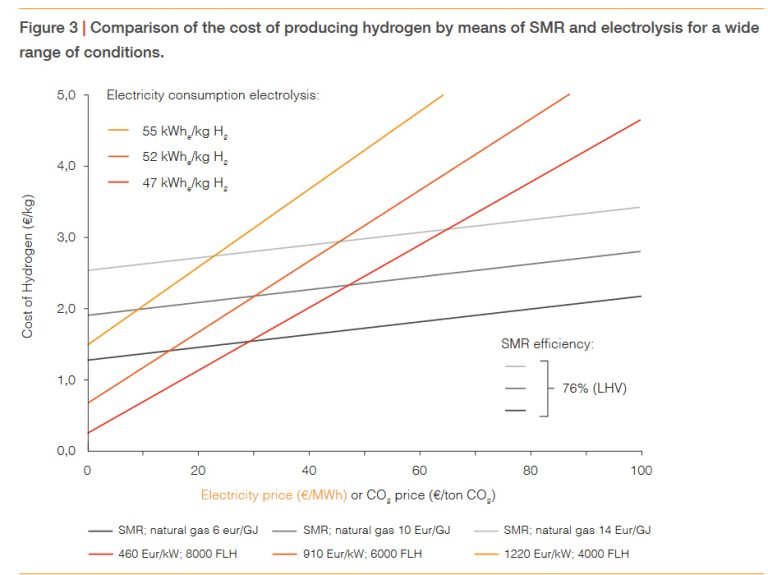Hydrogen is seen as the ultra clean fuel for a sustainable future. But its CO2 emissions are higher than those of diesel. What is the chance of climate neutral hydrogen?
Delfts students developed the hydrogen race car. (Photo: Team Forze)
A flashy pink racing car drew lots of attention on the racing circuits this summer. Not only for its unusual colour, but also for the sound that was somewhere between humming and screeching, and the cloud of steam at the back. On the circuits in Zandvoort and the TT Assen the pink racer kept up with the loud roaring Porsches. That hydrogen technology has become a serious challenge for combustion engines was very apparent when the Forze VIII combustion engine built by students came second in the Supercar Challenge in Assen. “Never before has a hydrogen driven vehicle left other racing cars behind in an official race, let alone in a race against these type of petrol cars,” said team manager Zhi Whei Cai.
Hydrogen cars are not only found on circuits, you can see them on the motorway too. But you need a bit of luck to see them. These quiet cars are just as rare as Rolls Royces – on 31 May 2019 there were 114 hydrogen cars in the Netherlands compared to 111 RRs sold since 1983. There are 11,000 hydrogen cars in the world now, but according to collated government goals, there should be 2.5 million by 2030. This figure was calculated by the International Energy Agency (IEA) for The Future of Hydrogen report that was handed out to world leaders at the last G20 conference in Tokyo by IEA top man Dr Fatih Birol. ‘Hydrogen is receiving much interest in the world and it could help us make headway on the long held promise of clean energy solutions,’ says Birol in the foreword.
That ‘long held promise’ of hydrogen as a clean and universal fuel for industry, transport and domestic use was proposed by Jeremy Rifkin as early as 2002 in his book, The Hydrogen Economy. Rifkin (1945) is an American economist, political advisor and activist that writes influential books on the impact of technological innovations. In The Hydrogen Economy he predicted with great flourish the end of the fossil fuel era, the emergence of a much better and cleaner future with hydrogen as the emission free fuel.
It seems that the Forze team is proving Rifkin right. So will hydrogen technology soon put an end to the era of fossil fuel? I am afraid not, and will explain why.
More emissions than diesel
In contrast to petrol and diesel, hydrogen is not a source of energy but an energy carrier that is derived from a source of energy. It could be produced from electricity, but in practice this is rare – only 0.1% according to the IEA report. The most hydrogen by far is obtained from natural gas in an energy guzzling process that is known as steam methane reforming (SMR). To a lesser extent hydrogen is also produced from petroleum and coal. This releases a significant amount of CO2. Hydrogen may be clean at the point of use, but its production emits a lot of greenhouse gases.

So how much CO2 are we talking about? The IEA estimates that in 2018 the production of 70 million tons of hydrogen generated 830 millions tons of CO2 emissions.
The carbon footprint of hydrogen is 0.3 kg CO2 per kilo watt hour (see below). The climate impact thus lies between diesel (0.27 kg CO2/kWh) and coal (0.34 kg CO2/kWh).

Six shades of hydrogen
Surely this could be cleaner? Technically, yes. Emission free hydrogen can be obtained through electrolysis of water (2H2O à 2H2 + O2) using green energy. Or by storing the emitted CO2 during steam methane reforming (SMR). Machiel Mulder, Peter Perey and José L. Moraga of the University of Groningen wrote about the economic viability of these technologies in Outlook for a Dutch hydrogen market.
 Costs of different varieties of H2 production. (Source: Outlook for a Dutch hydrogen market)
Costs of different varieties of H2 production. (Source: Outlook for a Dutch hydrogen market)The ‘Groningers’ distinguished between six types of hydrogen: SMR in the shades grey, blue and green. SMR hydrogen is obtained from natural gas (grey). If the resulting carbon dioxide (CO2) is stored, they refer to this as blue hydrogen. If biogas is used, it is green hydrogen. The electrolysis version is in shades of grey (standard energy), green (green energy) and orange (green energy from the Netherlands).
These different types are shown in a cost framework that clearly demonstrates two things.
- Electrolysis is almost twice as expensive as production from natural gas.
- The threshold for green hydrogen production is only viable with a CO2 levy of EUR 40 per ton. The rationale is that producers will only store CO2 if the levy that they have to pay for the discharge is higher than the costs of storage. As long as the levy is lower than EUR 40 per ton, it is cheaper to burn the CO2 that is released during the production of hydrogen.
 Costs of electrolysis versus steam methane reforming. (Source: Outlines for a hydrogen roadmap)
Costs of electrolysis versus steam methane reforming. (Source: Outlines for a hydrogen roadmap)Hydrogen from electricity?
At what point does electrolysis using surplus green energy pay economically? The Outlines of a Hydrogen Roadmap report (Jörg Gigker and Marcel Weeda for TKI Nieuw Gas) gives an indication. Electrolysis is only economically viable if the price of power is extremely low, at around EUR 20-30 per MWh (the average tariff is about twice as high). The Groningers add (p. 70) that if the energy price is that low, all sorts of other users of items such as heat pumps and electric cars will buy more of these products which will put enormous pressure on the power grid. They believe that electrolysis will only be a serious contender in hydrogen production if, (1) the price of natural gas is high, and (2) after a major investment in the generation and transport of green energy. In the first case, the production of hydrogen from natural gas using SMR is less attractive, while the second is needed to make enough green energy available for electrolysis.
At what point is hydrogen sustainable?
Hydrogen from electrolysis is currently off the table. Producing it from natural gas is far from sustainable given the use of fossil fuels, but it could be climate neutral if a CO2 levy of EUR 40 per ton is imposed. At the point of writing, the emission allowance price is a little over EUR 25 per ton of CO2.
As the Forze team showed, the technology for a hydrogen economy is ready. We are just waiting for a higher CO2 price. Until then, the climate will not benefit from hydrogen because unbeknownst to users, the CO2 emissions of the fossil fuel economy simply continue.
 Hydrogen comes from refineries. (Photo: pxhere)
Hydrogen comes from refineries. (Photo: pxhere)Sources:
-
Centre for Energy Economics Research (RUG), Outlook for a Dutch hydrogen market
-
TKI Nieuw Gas, Outlines of a Hydrogen Roadmap
-
Jeremy Rifkin, The Hydrogen Economy, 2002
-
Volker Quaschning, Ernuerbare Energien und Klimaschutz, CO2-emissie tabel
Do you have a question or comment about this article?
j.w.wassink@tudelft.nl

Comments are closed.